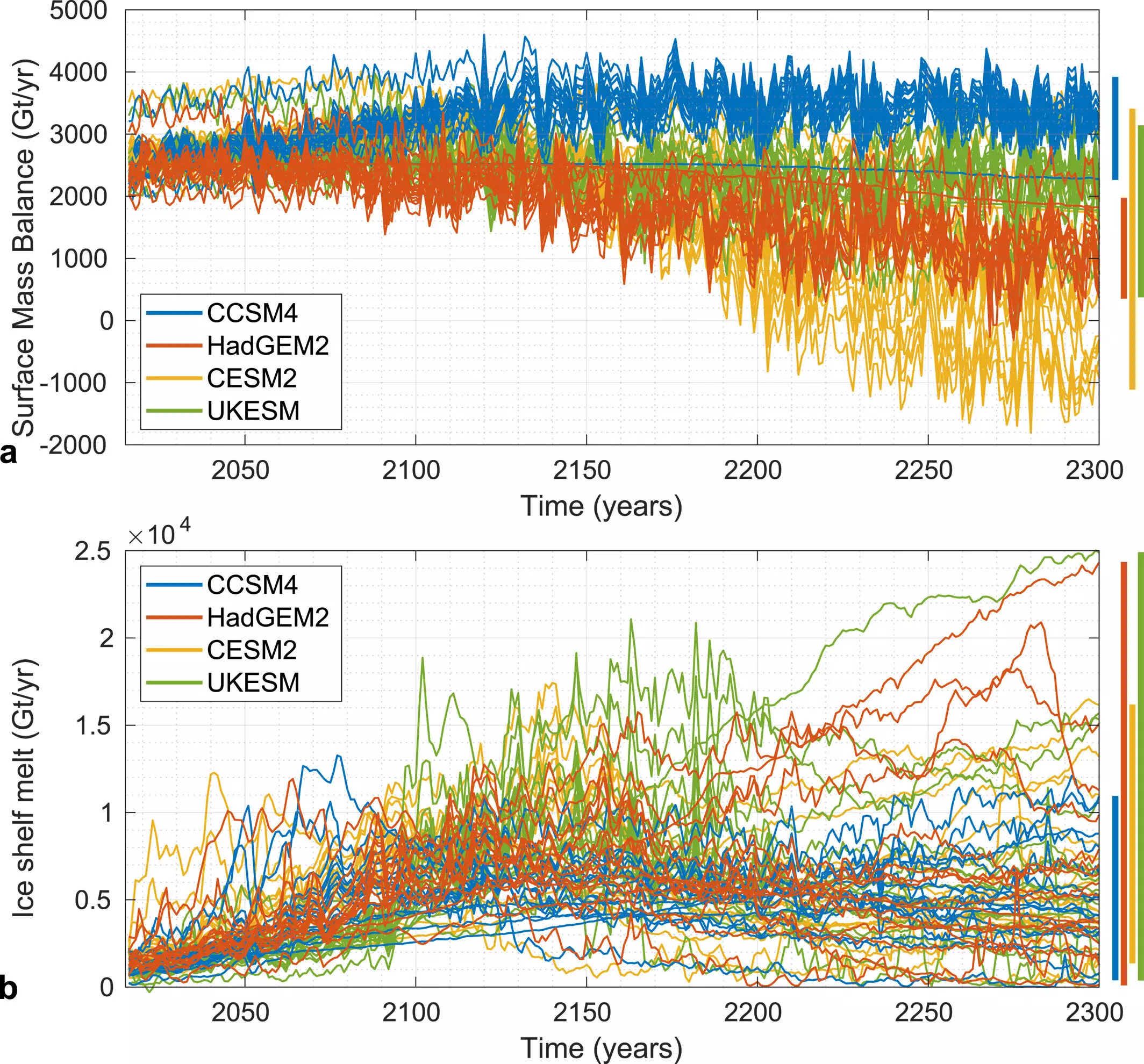Recent revelations from an extensive study led by Dartmouth College, involving over 50 climate scientists worldwide, have illuminated the pressing issue of Antarctica’s ice sheet dynamics. This research, detailed in the journal Earth’s Future, presents an alarming picture of how carbon emissions are expected to influence ice loss over the next three centuries. While the study highlights a troubling trajectory already underway, it emphasizes that projections for the future extend well beyond the commonly discussed year of 2100, a time frame usually considered by policymakers.
This collaborative effort synthesized data from 16 distinct ice-sheet models, establishing that the rate of ice loss from Antarctica will steadily increase throughout the 21st century, even under existing carbon emission levels. However, the projections reveal a stark contrast when examining the fate of the ice sheet beyond 2100, where consistency among models diminishes sharply.
The findings indicate that unless significant action is taken to reduce carbon emissions, the western basins of Antarctica will experience rapid ice retreat starting in the latter part of the century. By the year 2200, experts predict that the potential rise in global sea levels could be as alarming as 5.5 feet, with some extreme predictions hinting at the possibility of a near-total collapse of the Antarctic ice sheet by 2300. This stark projection should serve as a critical wake-up call: the time for holistic climate action is now, or the consequences will be dire.
The lead author, Hélène Seroussi, underscores a crucial point often overshadowed in climate discussions: most projections focus narrowly on the immediate future, leaving a significant gap in understanding the long-term consequences of current greenhouse gas emission trajectories. This study attempts to fill that void, providing essential data that could shape policies and strategies addressing sea-level rise in the decades to come.
One particularly striking component of this research is its exploration into the variability of ice retreat timings, which were significantly influenced by the specific ice-flow models employed. Despite differences in projected timings, the models consistently agree on the severity of ice loss once large-scale melt initiates. Seroussi notes that once these critical thresholds are crossed, the melt processes will inevitably accelerate, rendering mitigation efforts nearly impossible. This implies urgent action is required to avert a scenario in which several basins could fully collapse by the end of this century.
The research findings advocate for an immediate reevaluation of emission reduction strategies – questioning the adequacy of current efforts in light of future ice stability. The emphasis on swift action is far from a call to alarm; rather, it acts as a pragmatic acknowledgment of the scientific consensus on climate change: proactive measures are essential for preserving the integrity of our polar regions.
Moreover, Seroussi’s insights on the study’s implications extend into collaborative avenues for future research. The methodologies and models established can pave the way for enhanced understanding of regions still shrouded in uncertainty, such as Greenland’s ice dynamics. By pooling resources and knowledge within the international scientific community, researchers can develop a more nuanced and accurate picture of our planet’s ongoing changes.
This study serves not just as a scientific endeavor but as a catalyst for dialogue among stakeholders, policymakers, and the public. Acknowledging the pressing need for action against climate change, the research urges a collective responsibility towards reducing emissions and mitigating the impending impacts of climate change for generations to come.
The Dartmouth-led study sheds light on the alarming future of Antarctica’s ice sheet in the context of greenhouse gas emissions. While society has often focused on the immediate timeframes of climate impact, this research broadens the discussion to an urgent need for long-term solutions. As the models indicate, the consequences of inaction are monumental, prompting an imperative for innovative approaches to minimize emissions and protect vulnerable ecosystems. As we reflect on these findings, it is clear that understanding and tackling climate change requires a united and sustained effort.


Leave a Reply